Installation, setup, and removal
Install AdGuard for Linux
Open the command line on your computer. On Linux, use the keyboard shortcut Ctrl+Alt+T. On Mac, type Terminal in the search field.
To install AdGuard, choose the version that better suits you (release, beta, or nightly) and enter the respective command.
Release:
curl -fsSL https://raw.githubusercontent.com/AdguardTeam/AdGuardCLI/release/install.sh | sh -s -- -v
Beta:
curl -fsSL https://raw.githubusercontent.com/AdguardTeam/AdGuardCLI/beta/install.sh | sh -s -- -v
Nightly:
curl -fsSL https://raw.githubusercontent.com/AdguardTeam/AdGuardCLI/nightly/install.sh | sh -s -- -v
If required, enter your admin password.
Press y to create a link in /usr/local/bin to the executable and wait until the installation is complete.
You can verify the signature to prove it’s an official version of AdGuard by using the gpg tool. Read more on GitHub
Initial setup
AdGuard for Linux requires an AdGuard license. If you don’t have a license yet, you can log in or create an account to get a free 14-day trial. If you already have a license, log in to activate it. To do it, follow this step-by-step guide:
After installation, enter:
adguard-cli activateThen select the desired option:
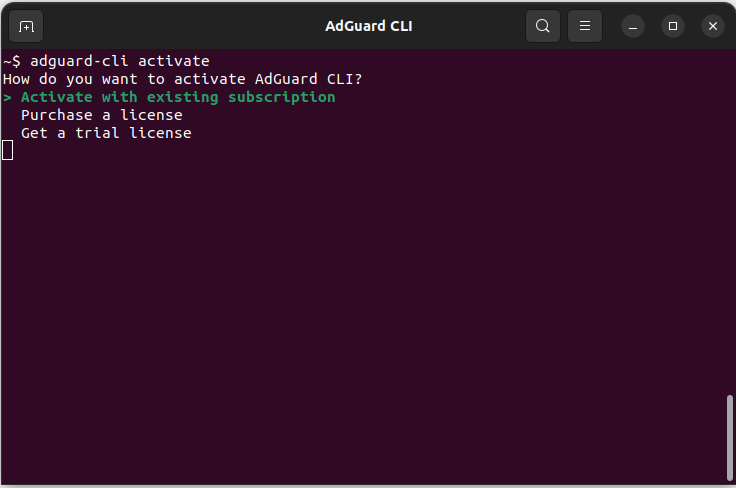
Once you have a license, follow the provided link to proceed with the activation:
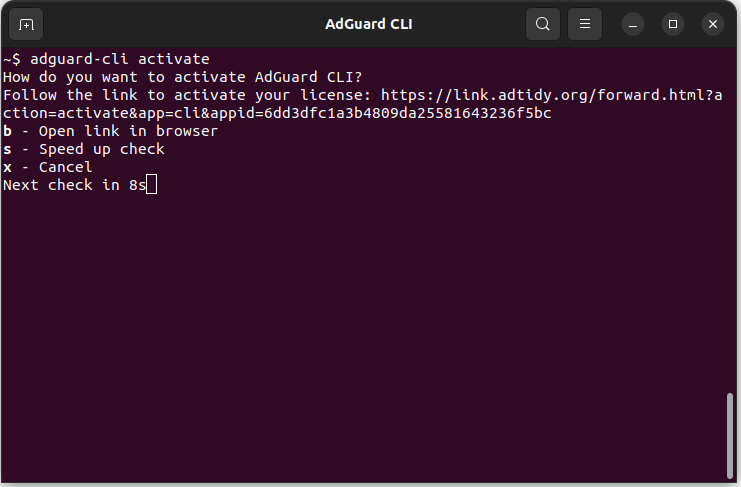
After activation, you can continue to work with the program:
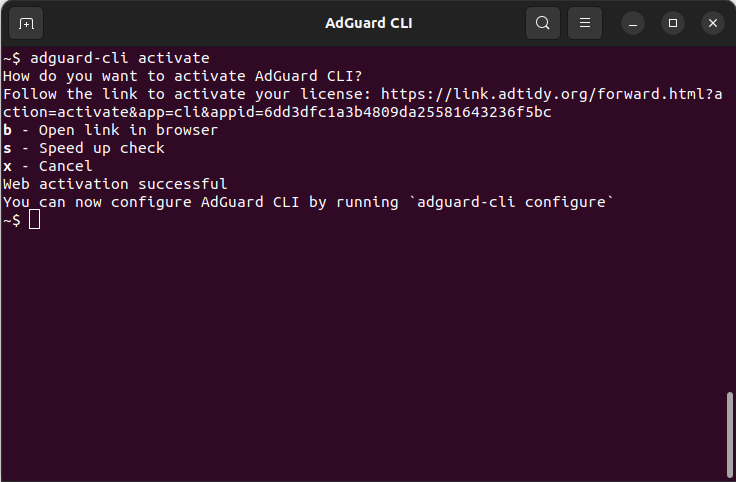
You can also reset your license by entering:
adguard-cli reset-licenseor view the license info by entering
adguard-cli licenseNow you need to set up AdGuard CLI. To run the configuration wizard, enter:
adguard-cli configure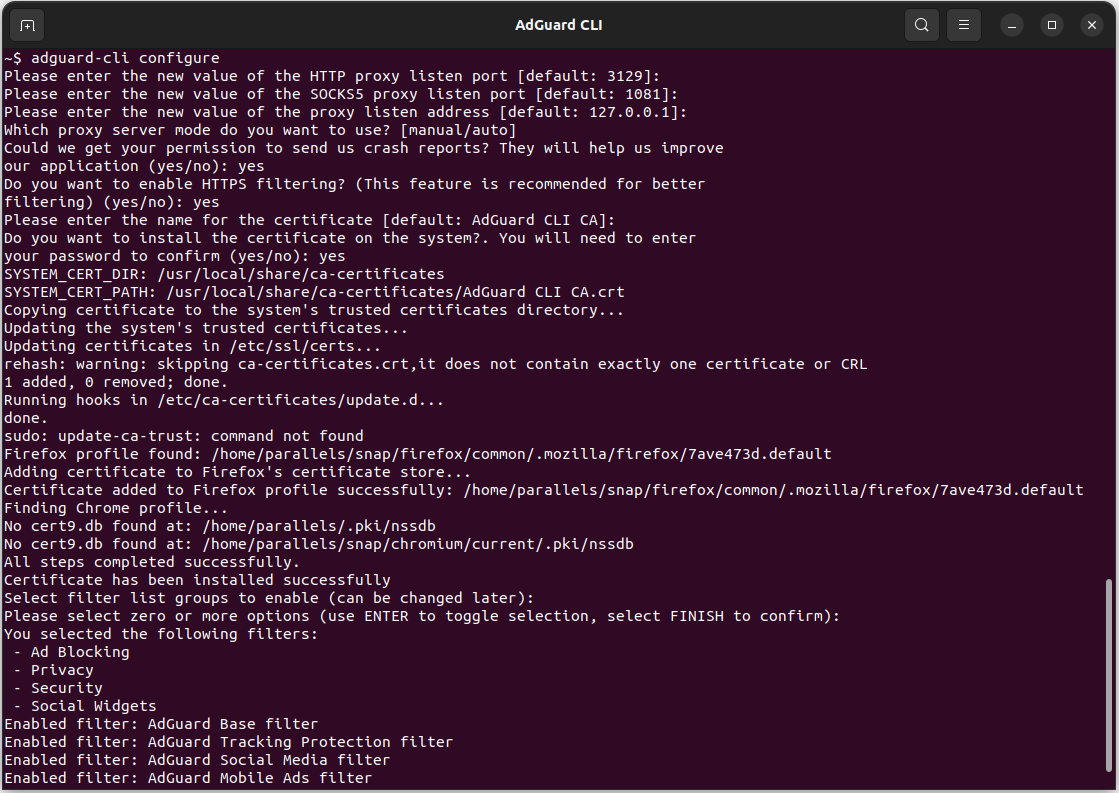
The wizard will ask basic questions required for the initial setup.
After that, you can start the AdGuard protection by entering
adguard-cli start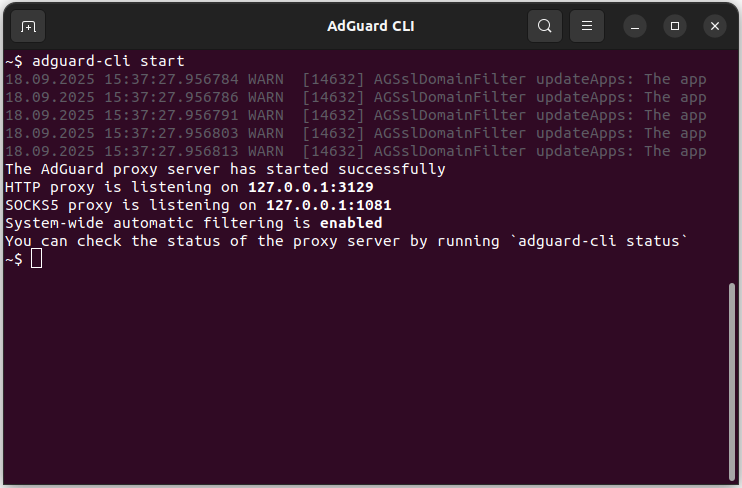
You can check the protection status using:
adguard-cli statusand stop it with:
adguard-cli stop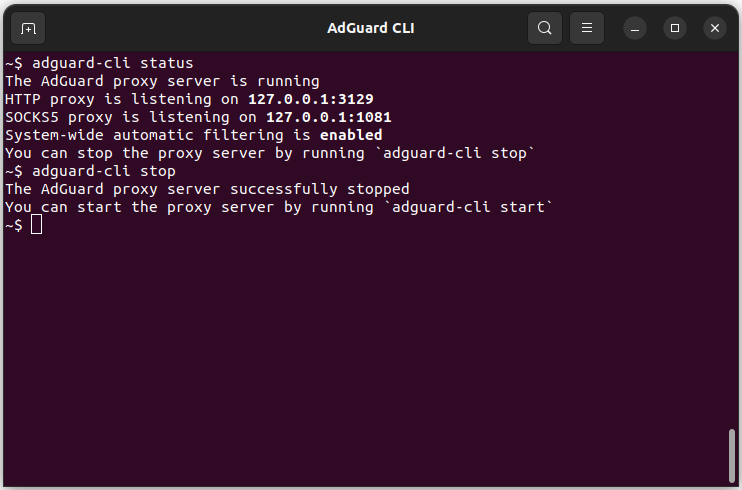
To check the current configuration, enter:
adguard-cli config show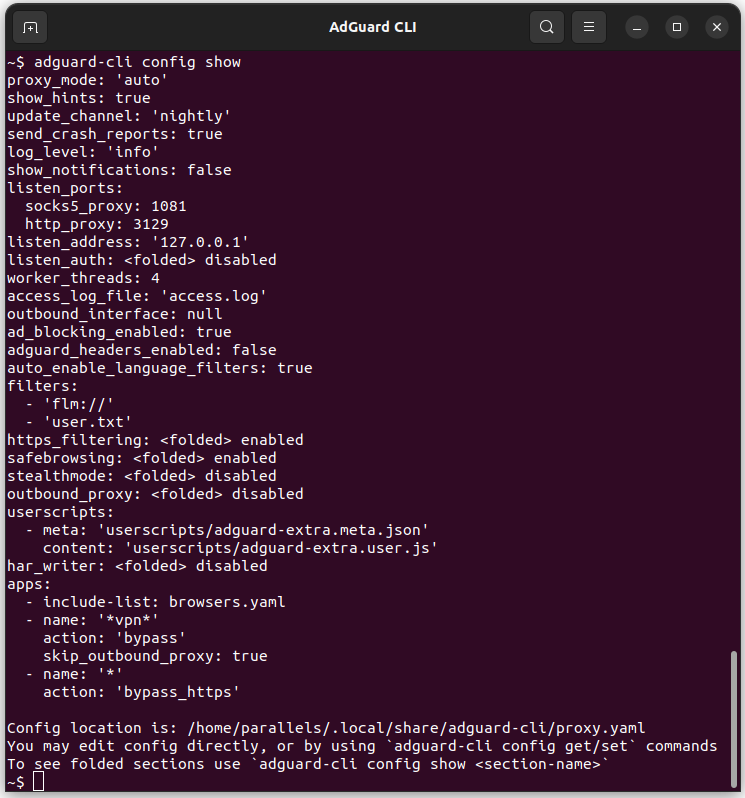
The path to the configuration file will also be displayed, which you can and should edit directly. It contains descriptions of all additional options.
As an alternative, you can use the commands:
adguard-cli config getor:
adguard-cli config setThey are primarily intended for scripting, though.
For further information on the available commands, check out the section Settings and protection management.
Uninstall AdGuard for Linux
To uninstall AdGuard, enter:
Release
curl -fsSL https://raw.githubusercontent.com/AdguardTeam/AdGuardCLI/release/install.sh | sh -s -- -v -u
Beta
curl -fsSL https://raw.githubusercontent.com/AdguardTeam/AdGuardCLI/beta/install.sh | sh -s -- -v -u
Nightly
curl -fsSL https://raw.githubusercontent.com/AdguardTeam/AdGuardCLI/nightly/install.sh | sh -s -- -v -u
If required, enter your admin password.